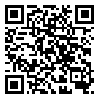Volume 13, Issue 5 (2022)
LRR 2022, 13(5): 197-222 |
Back to browse issues page
Download citation:
BibTeX | RIS | EndNote | Medlars | ProCite | Reference Manager | RefWorks
Send citation to:



BibTeX | RIS | EndNote | Medlars | ProCite | Reference Manager | RefWorks
Send citation to:
Estaji M. The Implementation of Self-Monitoring in Writing: Analyzing the Form and Content of EFL Learners’ Annotations. LRR 2022; 13 (5) :197-222
URL: http://lrr.modares.ac.ir/article-14-58296-en.html
URL: http://lrr.modares.ac.ir/article-14-58296-en.html
Associate Professor of Applied Linguistics, Department of English Language and Literature, Faculty of Persian Literature and Foreign Languages, Allameh Tabataba’i University, Tehran, Iran , estaji@atu.ac.ir
Abstract: (2336 Views)
The self-monitoring technique, using the learners’ annotations and teacher’s response as its base, proved to be one of the beneficial alternatives for the traditional teacher feedback. Although some studies have been done on the effects of self-monitoring technique, more studies are still required to place this tactic at the forefront of educational practices. This study examined Iranian EFL learners’ annotations in terms of their form and content. To this end, after homogenizing the participants, 30 university students were selected and received essay writing instruction employing the self-monitoring technique for eight sessions. The learners’ annotations were gathered and classified in terms of their content and form based on the frameworks established by Sarabia, Nicolás, and Larioss (2012) and Storch and Tapper (1996) respectively. The research results, as for the content of the annotations, evinced that the largest number of annotations fell into the categories of lexis and syntax, and to a lesser extent the discourse organization. Regarding the form of the annotations, most of the learners’ annotations fell into the category of “a demand for the correction of an L2 form”. The results of the chi-square test also showed that the difference in the content and use of language forms of annotations used by students was significant. Hence, the use of self-monitoring technique in writing courses brings a wealth of information regarding the writing content and problematic areas for both the teacher and learners as they can have discussions over the written text, making the process of writing more interactive.
Keywords: Annotation form, content of annotations, EFL learners, self-monitoring, teacher feedback, writing course
Send email to the article author
| Rights and permissions | |
 |
This work is licensed under a Creative Commons Attribution-NonCommercial 4.0 International License. |









